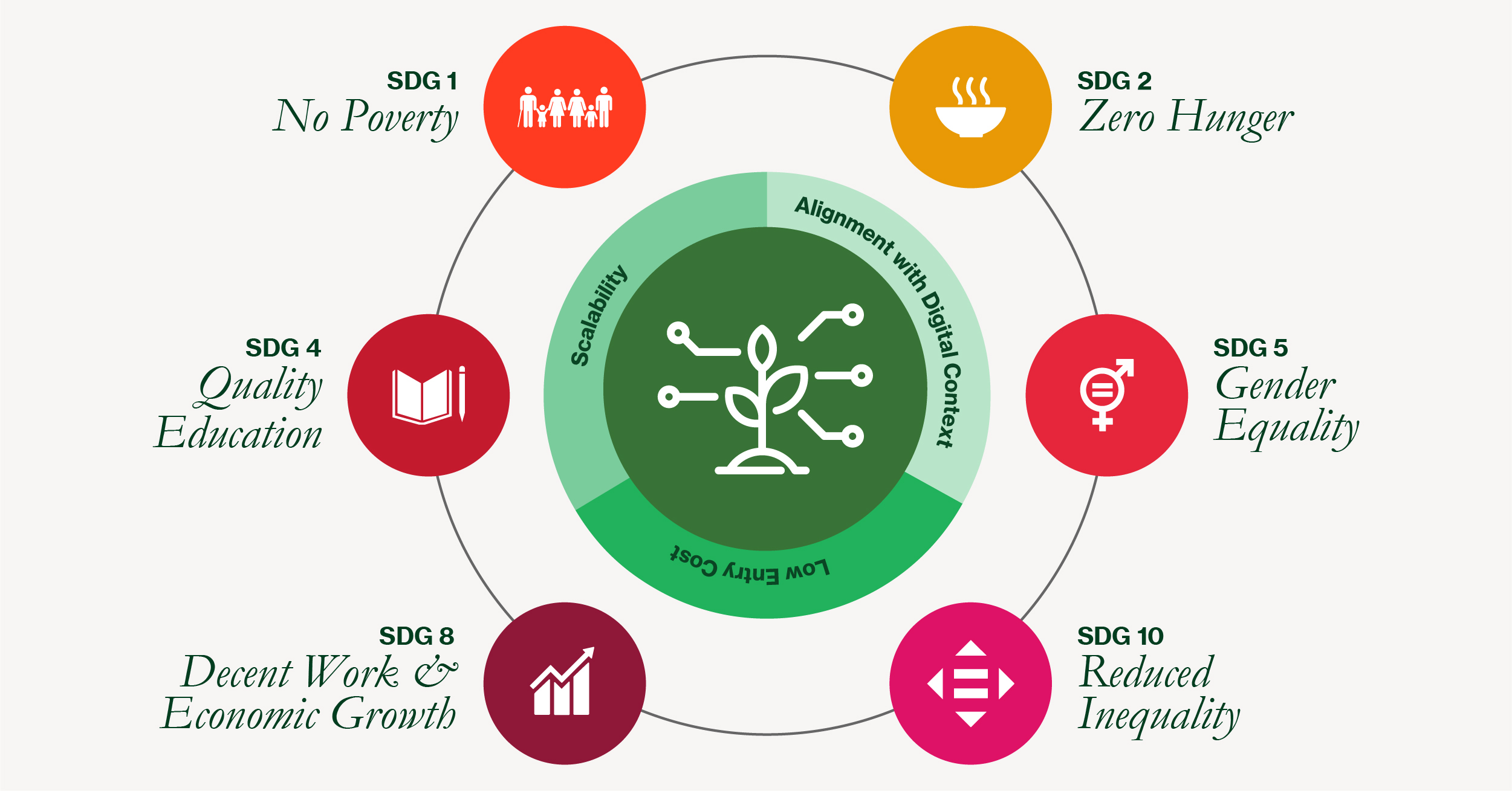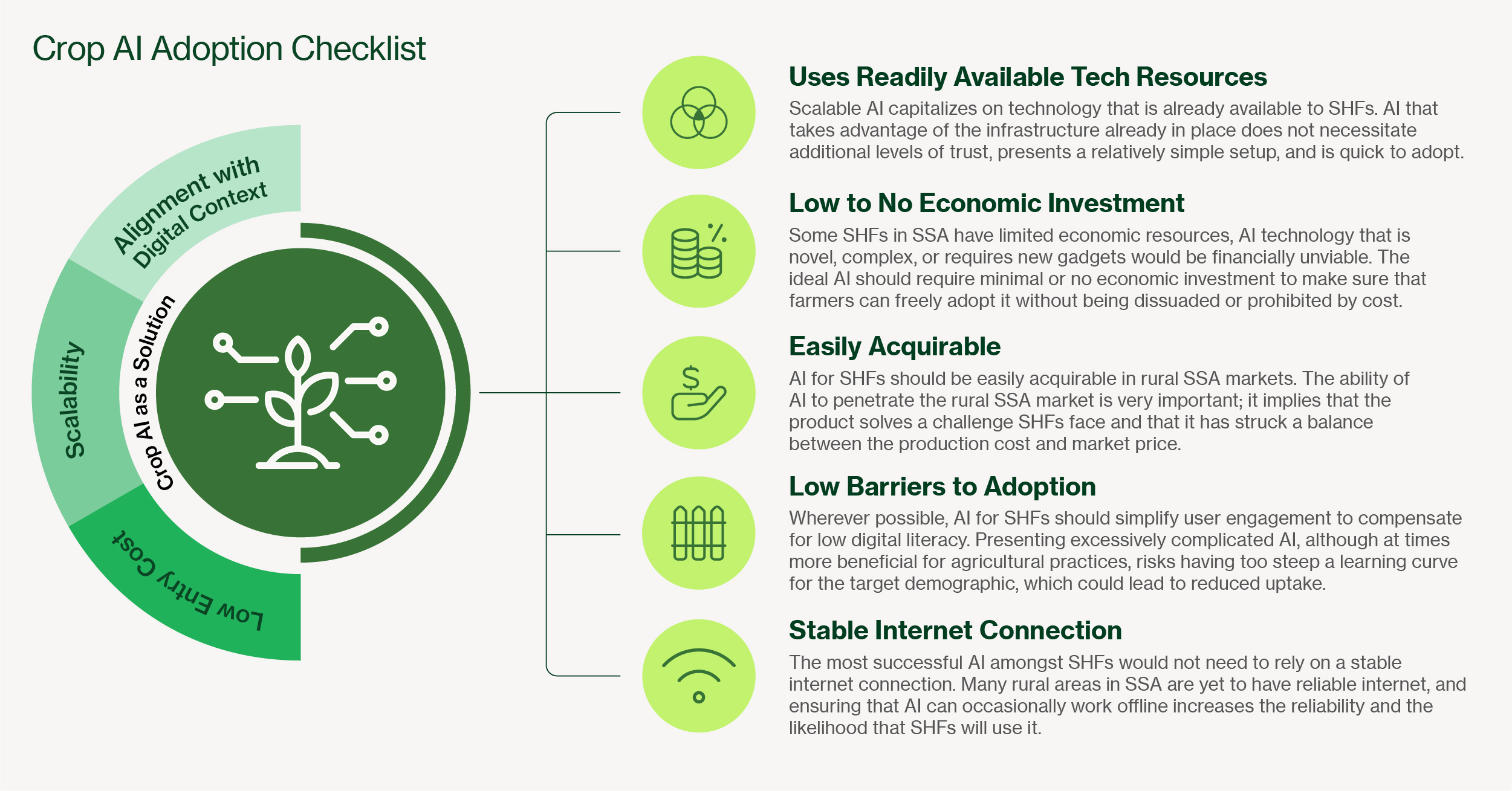Agriculture, a linchpin of Sub-Saharan Africa’s economy, confronts formidable challenges, including stagnating productivity and low yields exacerbated by climate change. Agriculture employs an estimated 65-70 percent of Africa’s labor force and accounts for approximately 30-40 percent of its GDP.1 Yet, the continent remains a net importer of food, leading to food price inflationary pressure.2 With yields in Africa trailing other regions like Asia and the Americas, and 60 percent of the available arable land in the world,3 there is ample opportunity for significant improvements. Tools and technologies like better seed varieties, greenhouses, and fertilizers hold promise. This study delves into one of these tools, Artificial Intelligence (AI), which has the potential to help smallholder farmers improve productivity at a low cost. We examine the economic implications of this AI tool for smallholder farmers and rural communities in Sub- Saharan Africa.
In SSA, over 80% of farms are managed by resource-constrained smallholder farmers (SHFs) who cultivate in challenging circumstances with lower levels of productivity than farmers in the rest of the world.4 Boosting crop yield normally requires significant additional investments—a financial hurdle far too high for the average smallholder farmer, who typically has a lower income and limited access to capital and commodity markets. Farmers are in critical need of tools to mitigate crop losses while minimizing financial burdens. Given that SSA farmers lose an estimated half of their crops to pests each year, a low-cost tool to reduce crop loss could improve the productivity of farms and boost the incomes of farmers.
There are several ways in which the use of data analytics and AI in farming practices can improve crop yields in African farms. Our report takes a specific application: Crop Protection AI (Crop AI), which improves yields through disease detection and pest protection, and is a readily adoptable solution tailored to SSA’s agricultural landscape. Due to its scalability, low entry cost, and alignment with the digital literacy levels of rural farmers, Crop AI stands out as a promising solution. Crop AI technology offers pest and disease diagnosis, deficiency analytics, and precise guidance on pesticide application. This precision prevents indiscriminate pesticide use, reduces pesticide pollution,5 and fosters cost savings for farmers.
Crop AI technology can address the unique challenges faced by SSA’s SHFs. Beyond tackling crop loss, large-scale adoption of Crop AI empowers farmers with digital tools that enhance productivity, promote sustainability, and contribute to the region’s economic development.
There are several ways in which AI interventions can affect farmer productivity. The advantage of this AI-enabled solution is its accessibility through any smartphone with internet connectivity and ease of use, requiring minimal digital literacy. For example, using the Plantix app, the one we used for our model, a farmer can take a picture of a sick crop, upload it to the app, and receive a diagnosis and treatment, along with prevention methods for future crops. This information can be delivered via audio in a locally appropriate language, eliminating the requirement for literacy. If deployed, this low-cost, scalable AI solution can make an immediate, measurable impact on SHF productivity, directly addressing the critical issue of crop loss.
Given that SHFs are often the most economically marginalized, any technology enhancing their revenue directly uplifts these communities. With over a third of the global food supply produced by smallholder farmers,6 Crop AI technology has the potential to create ripple effects on the entire value chain, enhancing food security and aligning with key UN Sustainable Development Goals.

















